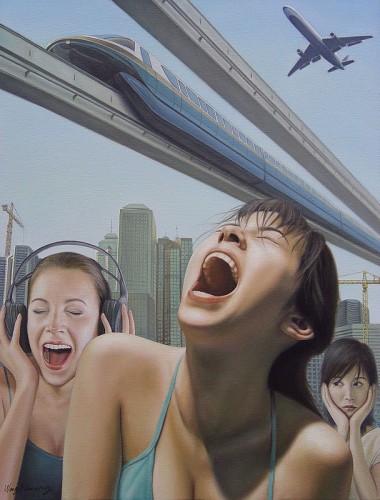Of course we have ongoing and by now rather tired conversations concerning China’s (collective) theft of the world’s intellectual properties. Certainly, the postmodern notion that origins are pointless, and authors are themselves more the product of textual production than the agent does not resonate well in global commerce law offices contracted by Microsoft, Miramax and the like. (We may be tired of hearing about intellectual property infringement, but the corporations’ prosecutor divisions are not likely to let up the hunt for perpetrators anytime soon.)
Nonetheless, the newer chapter in this conversation is the China-on-china copying, pilfering, our out and out stealing that seems very much on the rise. So much for the well-rehearsed notion that to copy is to pay a form of respect. A notable instance of such borrowing with which I’m familiar is the Sichuan artist Wang Niandong 王念东. When I first encountered his work roughly two years ago, I was simply flabbergasted by the clear similarity (not the best word here) to Zhong Biao’s work. More striking is the fact that Wang is a graduate of Sichuan Academy of Fine Arts, where Zhong Biao is on the faculty. According to Zhong, Wang (who is 10 years younger than Zhong) came to him for some guidance and direction. It would appear that Wang listened intently to what Zhong had to say. Or, he just looked at what Zhong was doing, and, shall we say, followed suit:
Wang Niandong (link here to his Hallmark Gallery in Calfornia)
Urban Cries, 24 x 18 1/8 inches, 61 x 46 cm, 2006, Oil on Canvas

Put next to some famous work Zhong Biao:


